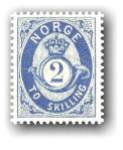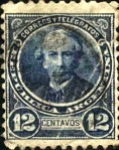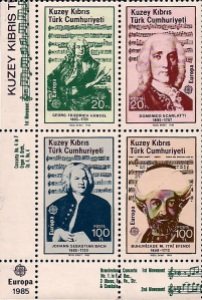 Music philately began with the issuance of some of the very first postage stamps in the mid-nineteenth century: The inaugural issues of several European countries included images of post horns. Purists may argue that post horns were mere signaling devices, but at that time they were already being used in classical compositions, so their depictions may be considered musical images.
Music philately began with the issuance of some of the very first postage stamps in the mid-nineteenth century: The inaugural issues of several European countries included images of post horns. Purists may argue that post horns were mere signaling devices, but at that time they were already being used in classical compositions, so their depictions may be considered musical images.
 Other nineteenth-century stamps featured depictions of prominent political figures who were also musicians—for example, Argentina issued a stamp honoring the statesman and composer Juan Bautista Alberdi in 1888 (left)—but they were concerned with politics rather than music. The first explicitly musical stamp was Poland’s issuance honoring Ignacy Jan Paderewski in 1919.
Other nineteenth-century stamps featured depictions of prominent political figures who were also musicians—for example, Argentina issued a stamp honoring the statesman and composer Juan Bautista Alberdi in 1888 (left)—but they were concerned with politics rather than music. The first explicitly musical stamp was Poland’s issuance honoring Ignacy Jan Paderewski in 1919.
 Through the 1950s countries increasingly celebrated Western classical musicians and composers. In the 1960s all aspects of musical life became potential subjects—institutions, festivals, instruments, dancers, and so on—and non-European countries asserted their national identities with images of their own traditional and historical music cultures. In the later twentieth century images of popular and jazz musicians gained increasing demand .
Through the 1950s countries increasingly celebrated Western classical musicians and composers. In the 1960s all aspects of musical life became potential subjects—institutions, festivals, instruments, dancers, and so on—and non-European countries asserted their national identities with images of their own traditional and historical music cultures. In the later twentieth century images of popular and jazz musicians gained increasing demand .
This according to A checklist of postage stamps about music by Johann A. Norstedt (London: Philatelic Music Circle, 1997), which lists some 14,000 stamps with music-related images.
Above, stamps issued in Northern Cyprus in 1985, which was designated European Music Year by the Europa Federation (click images to enlarge). Below, a curious video about Robert Burns iconography.
Related article: Postage stamps.




Pingback: Indian stamps redux | Bibliolore
Pingback: Postage stamps | Bibliolore